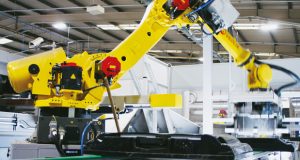The proliferation of new technologies has led to an explosion of data in recent years. Here, Shane Betts, Head of Corporate, Integral UK looks at maintenance for the digital age
Sixteen years since the British mathematician and Tesco marketing guru Clive Humby declared data to be the “new oil”, many industries are now harnessing digital information to spur innovation and drive strategic decision-making. This is true even for building maintenance. The traditional view is that the discipline is cold, staid, and old-school. While maintenance has always been a critical function in facilities management, quantifying its value beyond statutory compliance has also been difficult, making it a prime candidate for cost-cutting measures.
But that’s all changing. The emergence of smart technologies to support existing BMS and static data sources — such as internet of things (IoT) sensors, artificial intelligence (AI), machine learning (ML), and analytics platforms — is transforming maintenance into a data-led discipline that can help drive both FM and broader business objectives, especially in the post-pandemic ‘new normal’.
RISE OF ‘SMART ENGINEERING’
Historically, maintenance was based on industry standards or the recommended frequency of planned inspections. Engineers attended customer sites on scheduled visits to check the status of building assets. This action allowed both the client organisation and the service provider to tick a box under the contract’s SLA or KPI agreement. While on-site, engineers performed planned or reactive maintenance, including statutory works.
Frequency-based maintenance is an effective way of reducing downtime and saving on the costs associated with repairs and replacements. But this method also has its downsides. Often, for example, it forces engineers to tend to perfectly healthy assets while increasing the risk of unnecessary wear and tear on equipment that is routinely pulled apart and only carrying out routine inspections on essential / critical assets when they may require more intrusive maintenance.
Now, the technologies that underpin smart engineering are enabling a transformation from frequency-based maintenance into what can accurately be described as “insights-based maintenance”. By combining IoT sensors, AI- and ML-enabled analytics, and remote monitoring, smart engineering can significantly reduce operating and energy costs and increase efficiency by moving from routine frequency-based, labour-intensive maintenance to flexible, data-driven, predictive maintenance.
Once assets are equipped with sensors and gateways, data is sent to a smart building analytics platform. From here, technicians can either resolve a problem remotely by reviewing the report and liaising with the relevant contract manger or issue a work order through an integrated CAFM system for an engineer to investigate and resolve on-site.
This capability takes away time-consuming, repetitive tasks from engineers so that they can focus on more technical or higher value tasks and reduces the number of necessary site visits by engineers, saving money and carbon on travel in the long run.
THE FUTURE OF WORK
Myriad mega trends are now driving this transformation. As the economy continues to recover from COVID-19, businesses are making changes to their property portfolios and implementing new workplace models in response to shifting employee expectations. Last year, a JLL survey of more than 2,000 office workers from different organisations around the world found that 72 per cent want to work from home from time to time, while more than one in three (40 per cent) would like the option to work from third-party places, such as coffee shops and coworking spaces. As a result, many are implementing long-term hybrid working policies that give their people more freedom, while some are considering a more dispersed portfolio that incorporates a larger share of regional sites or flex spaces.
Building occupancy is likely to become far more fluid if these changes take place, thus impacting the demand on facilities, their assets, and the services that support them. Traditional frequency-based maintenance service followed the manufacturer’s recommendations for planned works. But these recommendations are less accurate in a hybrid environment. For example, the load on an air-handling unit will be much higher in a full-capacity or city centre building than it would be in a hybrid or regional site. In these instances, smart engineering can provide a more efficient maintenance service by using IoT sensors to read the air handling unit’s condition in real time. This data then enables engineering teams to spot trends, accurately project when the asset will fail and develop a more efficient long-term preventative maintenance schedule based on genuine insights rather than averages or guesswork.





